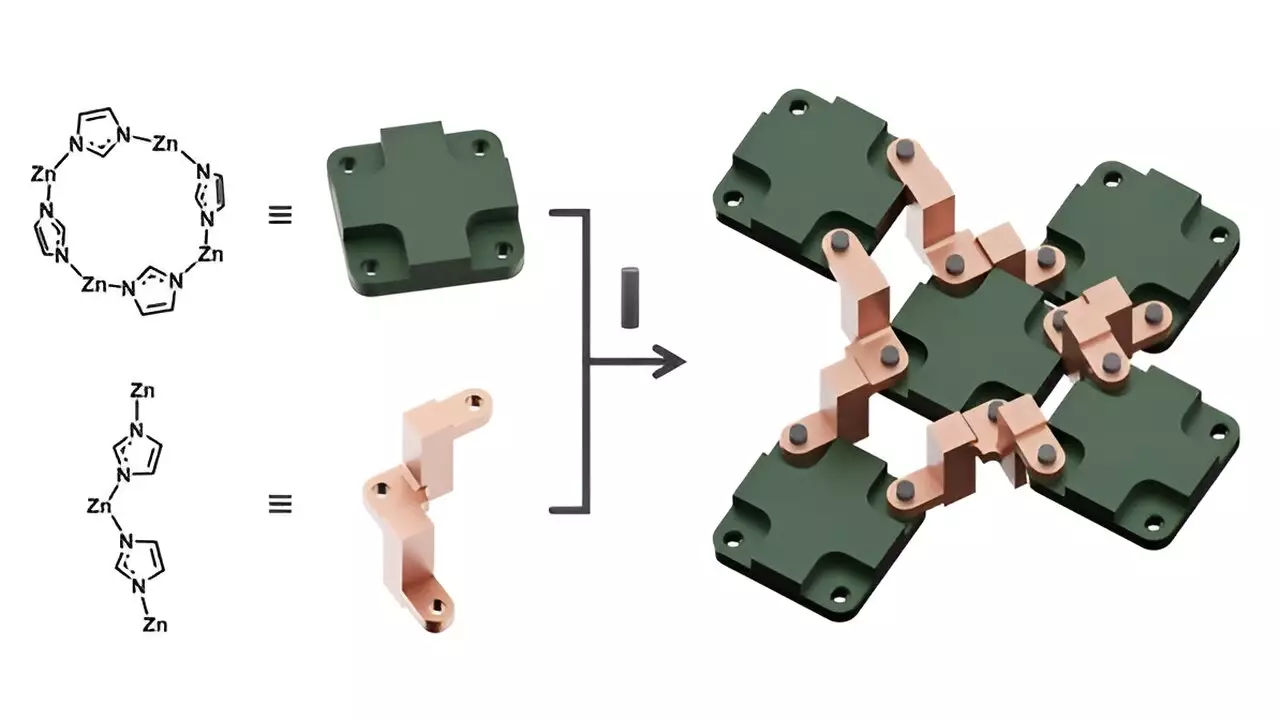In an era where the interplay between technology and nature begins to blur, the strides made in molecular-scale machinery are nothing short of remarkable. As everyday life pushes the limits of mechanical sophistication, the quest for more efficient and versatile machines continues. A pioneering group of researchers from the Ulsan National Institute of Science and Technology (UNIST) in South Korea stands at the forefront of this transformation, led by the visionary Professor Wonyoung Choe. Their explorations into zeolitic imidazolate frameworks (ZIFs) evoke a tantalizing glimpse of how we might engineer the future of technology.
From Concept to Creation
At the core of this research lies a bold ambition: to create solid-state nanomachines that mirror the intricacies of their larger counterparts. By leveraging metal-organic frameworks (MOFs) as their structural foundation, the team ingeniously embedded dynamic components that maintain their functional integrity at a molecular scale. This innovative approach resulted in a new class of machines capable of exquisite mechanical movements, akin to the action of conventional machines yet confined to the nanoscale realm. The team’s cutting-edge work has been illuminated in the esteemed Angewandte Chemie International Edition, where their discoveries challenge established paradigms of molecular mechanics.
The Mechanical Marvels of ZIFs
The research represents a critical advancement in our understanding of MOFs, particularly in how their structural properties can align with machine-like functions. The ZIFs developed by Choe’s team exploit the principle of a slider-crank linkage, deftly converting rotational dynamics into linear motion. This intricate mechanism allows these nanomachines to respond delicately to external stimuli, such as temperature fluctuations and solvent interactions, showcasing an adaptability that is paramount for any functional machine. The researchers’ innovative designs reveal a level of elasticity and flexibility hitherto unseen in ZIFs, raising hopes for their application in data storage and futuristic nanotechnologies.
Interlinking Functionality and Structure
A striking takeaway from the research is the correlation between the mechanical properties of these ZIFs and their structural design. The ability to swap and modify mechanical components within the solid-state machine signifies a shift toward customizable nanostructures, paving the way for new materials with unprecedented properties. By understanding the nuances of how various metal nodes and organic ligands interact within the ZIF framework, the researchers have uncovered a blueprint for engineering diverse machine-like behaviors tailored for specific applications.
The Future of Nanotechnology
Professor Choe’s insights into the implications of their findings are particularly captivating. He asserts that harnessing machine-like movements on a molecular scale not only propels us closer to artificial intelligence and molecular manufacturing but also opens doors to diverse fields, from medicine to energy management. The potential trajectory outlined by this research hints at a new landscape where engineers and scientists can synergize their efforts to realize machines that could revolutionize how we interact with our digital and physical environments. The study underscores a growing awareness that the future of technology will increasingly rely on the integration of biological inspiration and nanofabrication, positioning us at the cusp of a new technological renaissance.


Leave a Reply